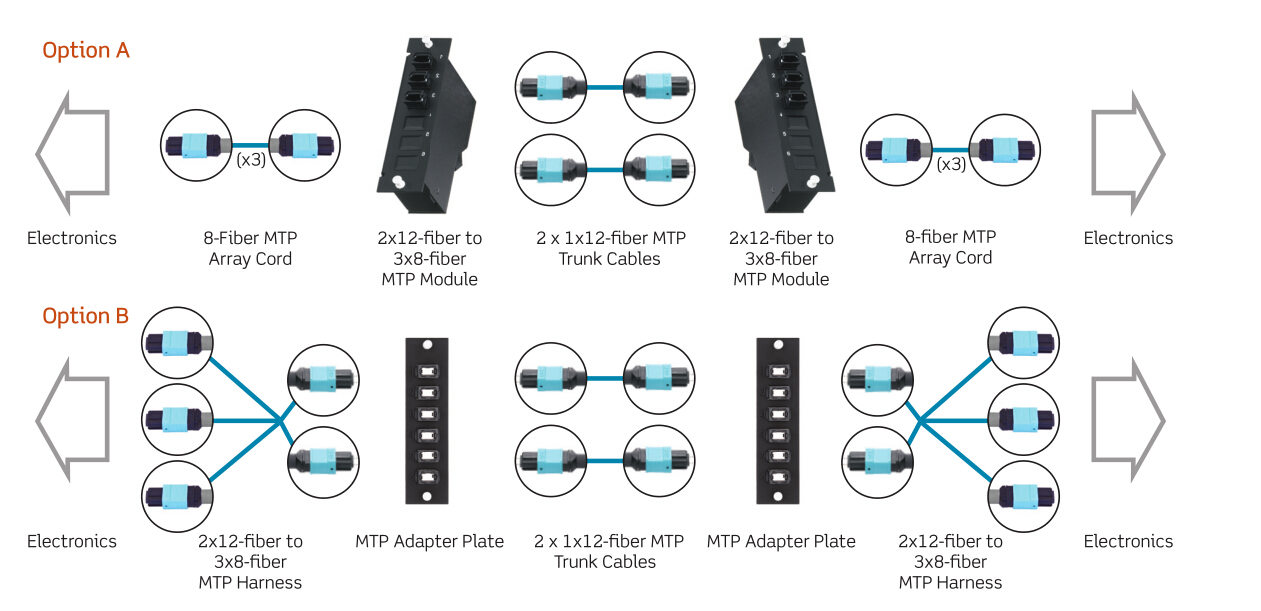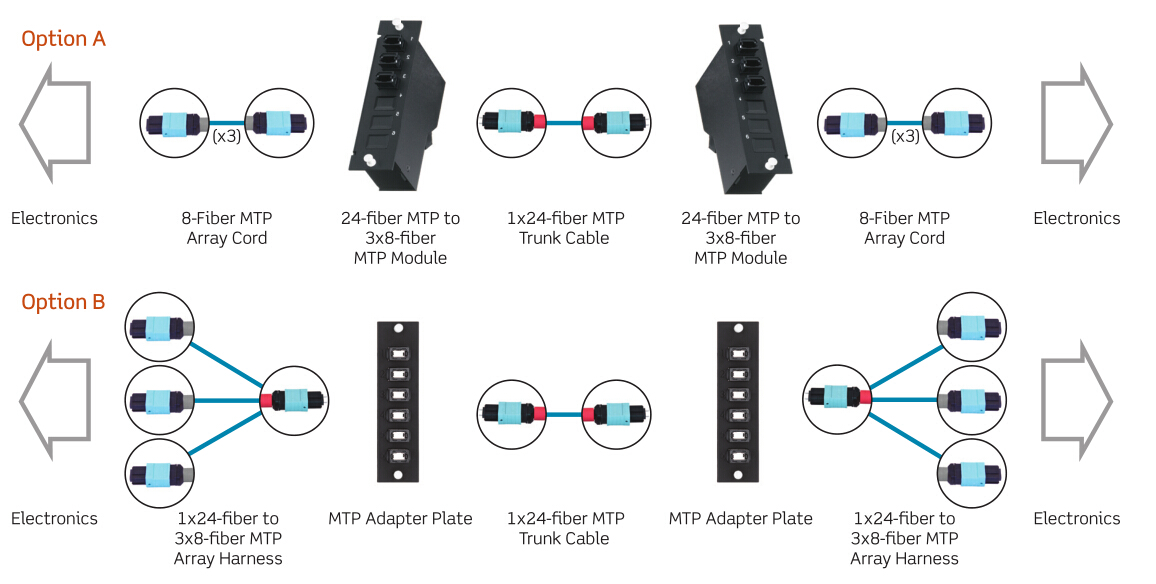Data centers regularly undertake their great migration to ever higher speed networks. With 10G commonly used in larger enterprises, migration from 10G to 40G to 100G is underway to meet the demands for greater bandwidth. Is your network cabling optimized for this inevitable growth? Creating a simple, cost-effective migration to support 40G/100G network needs is essential. This paper will discuss the pros and cons of 12-fiber and 24-fiber MTP/MPO cabling that provide the simplest migration path to 40G and 100G networks.
Trunks, harnesses, patch cords, modules and adapter plates are the necessary components used in the network. The following diagrams show the 12- and 24-fiber system configurations from 1G to 100G networks. With the 40G 12-fiber legacy configurations, a second trunk and another set of array harnesses will be needed to achieve 100% fiber utilization. For 100G, these additional components will be required for any 12-fiber legacy configuration.

1/10G Channel 12-Fiber Legacy Configuration

40G Channel 12-Fiber Legacy Configurations

100G Channel 12-Fiber Legacy Configuration
With 24-fiber trunks, a single cable can support a 1G-100G channel and will simplify network upgrades immensely. 1G and 10G networks will link the trunks to active equipment with MTP-LC modules and LC duplex patch cords. When equipment is upgraded, modules and patch cords are exchanged for the appropriate new MTP components, with no need to install new trunks. In addition, limiting changes reduces the inherent risks to network security and integrity whenever MAC work is completed.

1/10G Channel 24-Fiber Configuration

40G Channel 24-Fiber Configurations

100G Channel 24-Fiber Configuration
Higher density connectivity in the enclosure leaves more rack space for active equipment, reducing the total amount of floor space required. 24-fiber cabling has the obvious advantage. If the active equipment is configured for 24-fiber channel/lane assignments, enclosures can have twice as many connections with the same number of ports compared to 12-fiber (or the same number of connections using only half the ports).
The flip side of density is congestion. The more connectivity you are able to run in the same footprint, the more crowded it can become at the rack or cabinet. Here again, 24-fiber MTP trunks offer a huge benefit. Anywhere there’s fiber, from within the enclosures to cable runs that connect different areas of the network, you’ll have just half the number of cables versus 12-fiber. Runs carry a lighter load, fibers are easier to manage, and improved airflow reduces cooling costs.
12-fiber configurations may allow you to continue to use existing trunks when upgrading your equipment (if you already have 12-fiber MTP/MPO trunks), but will likely require additional trunks, more connectivity components, and other network modifications. In the long run, it’s much more expensive to retain these trunks than to upgrade to 24-fiber up front.
Fewer connectivity components to be replaced or added simplifies migration and reduces costs for both components and installation. Higher-density connectivity leaves more rack space for active equipment. And fewer trunks reduce cable congestion throughout the data center. In all, the 24-fiber MTP cabling will future-proof your network, lower your cost and maximize your return on investment.